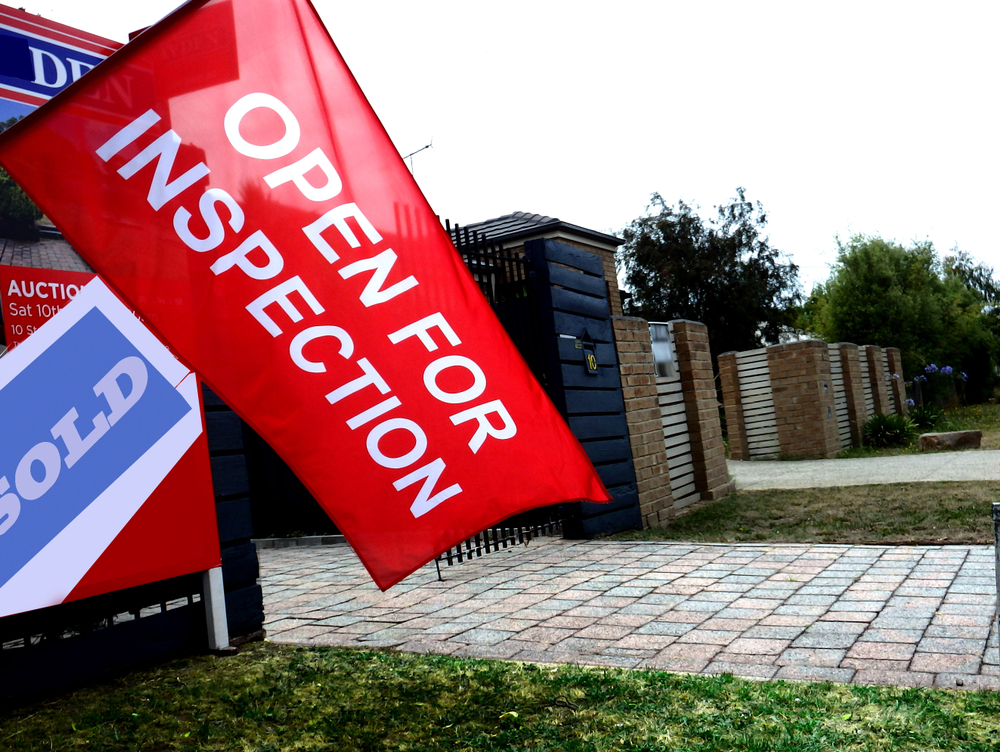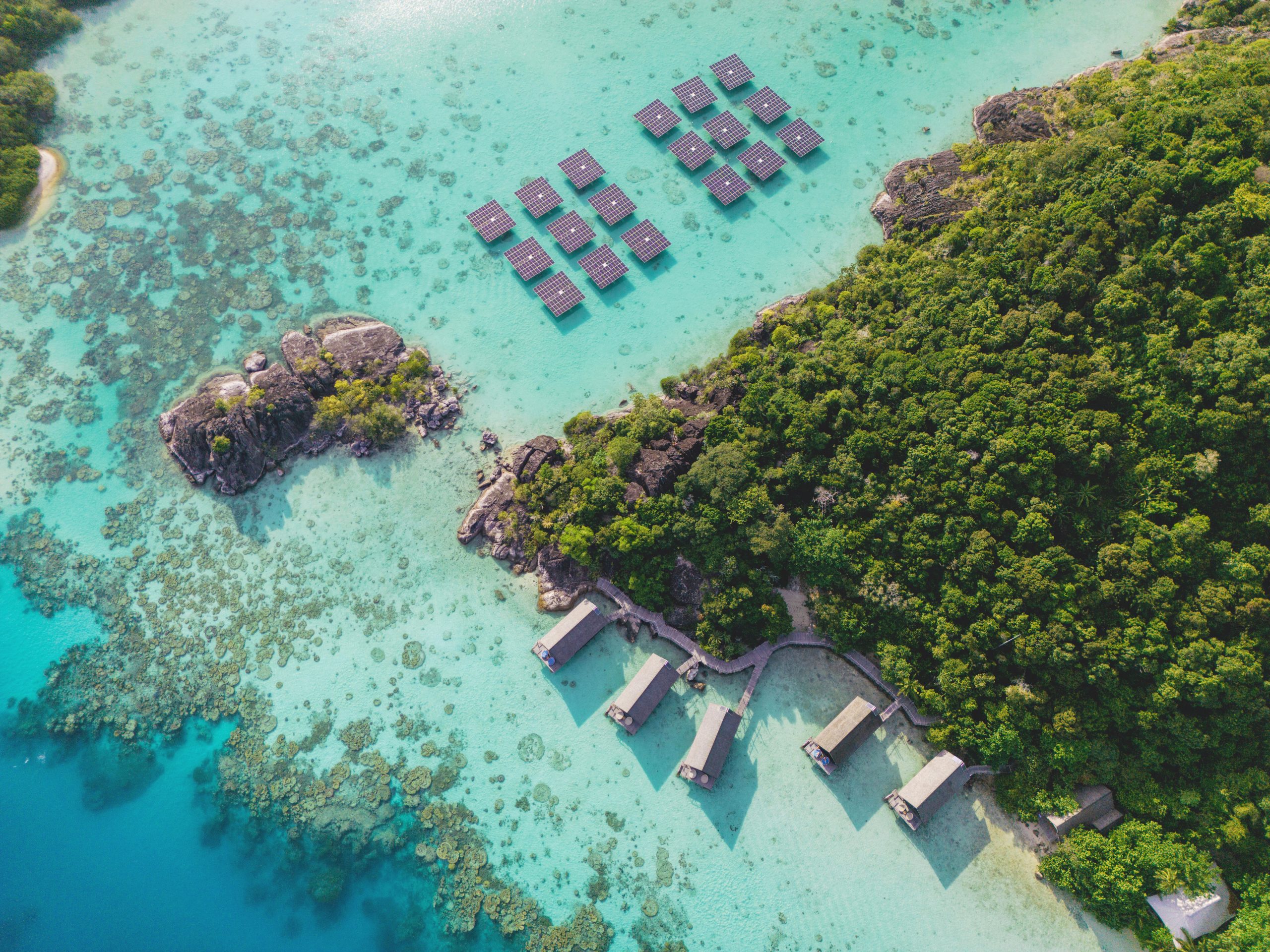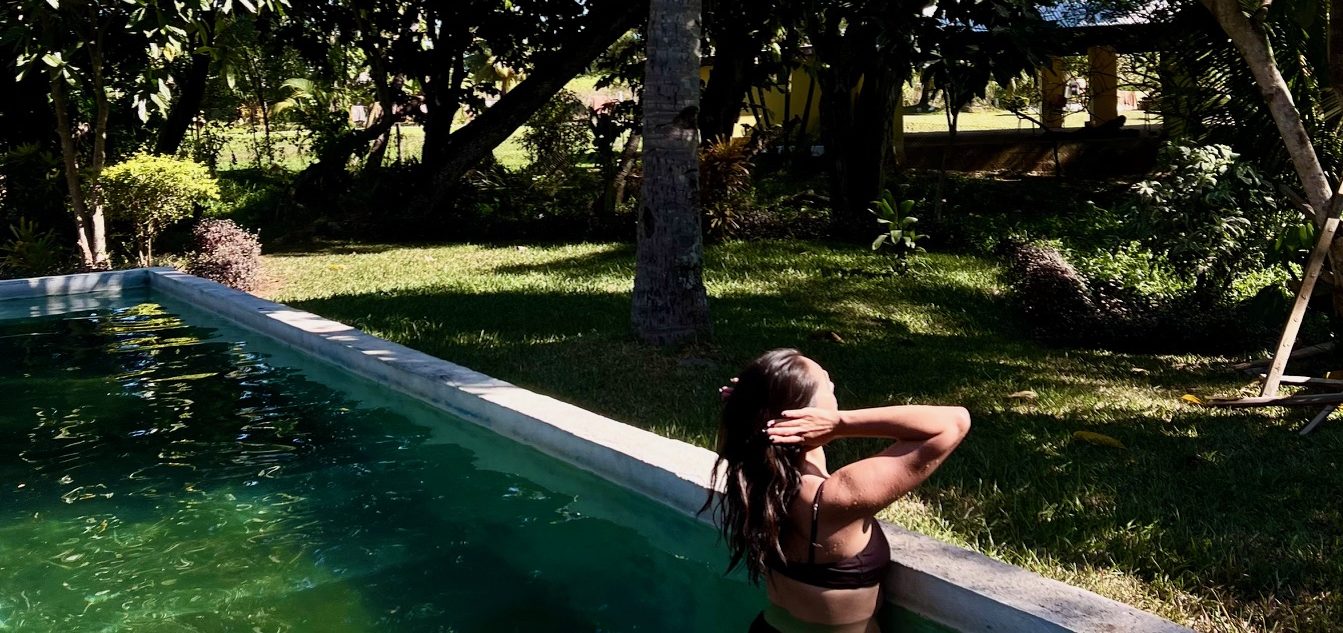‘Stealth wealth’ takes on new meaning for a Sydney family firmly focused on a sustainable lifestyle
An extraordinary house on Sydney’s Northern Beaches is redefining the meaning of luxury
From the Spring 2024 issue of Kanebridge Quarterly. Order your copy here.
Clinton Cole is what you might call the thinking person’s architect. While most people looking to build or renovate are understandably focused primarily on budget and aesthetics, the motivations of his clients tend to run to deeper roots.
Take, for example, this house in the Sydney suburb of Manly.
With uninterrupted ocean views in one direction and national park in the other, the temptation for the owners was to do as their neighbours had done and build a multi-storey mansion that directed all attention to the water.
An extraordinary site with almost endless possibilities, it sits on a larger parcel of land owned by the Catholic Church and sold as a longhold lease. When the owners bought the lease, there was a small 1960s cottage on the site that was inadequate for the needs of the family of four. Its position sandwiched between bushland and the surf also meant it is within a wildlife corridor and bushfire risk zone.
The clients, who are originally from Austria, wanted a home that would not only take in the ocean view, but make them and their tween-age daughters feel a part of the natural environment, all with an overlay of luxury.
They were also interested — very interested — in making the house as environmentally sustainable as possible, both in its construction and its ongoing functioning.
So when they discussed the brief with Cole, director of CplusC Architects + Builders, rather than talk about bedrooms and bathrooms or European appliances, they expressed how they wanted to experience spaces.
“They’re outdoorsy — it’s kayaks, bikes, paddle boards, bushwalking,” Cole says. “They talked about, at that first meeting, how they really loved the experience of walking through a shallow creek, the canopy of the trees hovering over the creek, that dappled light and the light reflecting off the water and how beautiful that was. I said: great, there’s your concept.”
The little cottage had to go. In its stead, Cole conceived a three-storey, four-bedroom house with study, a spacious eat-in kitchen packed with integrated storage and multiple living areas, including a rumpus room, of sorts.
“They talked about it more as an art room or entertainment room, but the entertainment was more just listening to music and occasionally watching TV,” says Cole.
“It was really a room for doing craft and art — a very craft-driven, rather than an entertainment-driven, rumpus room.”

A lower ground garage next to the entry and partially dug into the site provides storage for the family EV, as well as e-scooters, e-bikes, surfboards and two storage batteries to make maximum use of the energy generated from the 66 solar panel, 24.5kw system.
“Initially they only had one battery but they were gifting so much power to the grid that he said, ‘now I’m getting two’.
“They don’t pay a power bill,” says Cole. “There’s also a 15,000L rainwater storage underground next to the pool.”
Key to the concept was the indoor and outdoor spaces becoming one, allowing for abundant natural light and optimum but controlled air flow, as well as a family pool that relies on natural processes for filtration.
“It’s a natural pool so there’s no chlorine,” he says. “There’s frogs and fish in the pool.
“The frogs are having the time of their lives, as are the bandicoots — the site is in a bandicoot corridor as well.”
Placing the pool alongside the living areas — pool fencing regulations notwithstanding — was not just about providing somewhere for the clients to swim, and even fish, when the mood takes them.
“This was an opportunity (to create a space) where they described that dappled light and that feeling of walking up against the flow of a creek,” says Cole. “It was just obvious to put a body of water as the outlook (for the house), and have it on the north side.
“Then you get light dancing on the ceilings and refracting through glass at all different times of year.”

That desire to refract light also influenced the decision to install coloured glass in the double height living space, creating dynamic interiors that change with the passing of the sun over the day. It reiterates Cole’s position that how you live in your home day to day is often not about the most obvious view.
“Views are great when you walk into a house when you buy it but as time goes on, it’s less important,” he says. “I think Harry Seidler made me aware of this when he designed his own house. He designed his dining room table so he and his wife sat at the pointy end of the table and all the guests sat around looking out to the view.”
After researching the options, they chose to pour the slab using a low carbon concrete called Envisia, by Boral.
“It has about 30 percent of the embodied carbon of normal concrete and it doesn’t cost any more,” he says. “It also has a higher plasticity and a longer curing time. The higher plasticity is beneficial in terms of its slightly better waterproofing qualities.”
Because his team were also responsible for constructing the house, once the foundations were laid, the rest of the house was built from timber.
“We are a carpentry-based team so our workers have those skills to erect structures of that nature — and you can’t get a lower embodied energy than timber,” he says.
The initial plan was to demolish the old cottage and deal with the materials on site, but after careful consideration, it was decided it was not a feasible option.
“The plan was to crush that little house up, crush up the rock that was on the site and then use that for the walls of the landscaping, retaining walls and the garage wall below,” says Cole. “It turned out that retaining that onsite and getting the crusher to do that was about $50k. The (owners) did consider it but if we brought in crushed material, it was about $5k.
“It was a beautiful idea of doing it onsite but the practicalities of storing it and bringing in this 50 tonne crusher didn’t add up.”
Thanks to its position next to national park, the house was also subject to a Bushfire Attack Level (BAL) of 29. While not the highest rating, it meant that all external timbers had to be fire resistant hardwoods.
Choosing to take a wholly sustainable approach came with a higher price tag but not only were the clients willing to pay, they fully understood why they were doing it. Now retired, one of the owners is a former member of the executive team of a global software company that prides itself on achieving a high level of corporate responsibility and he carried that ethos of ESG into this project.
Cole says the clients were intentionally engaged in every aspect of the design and build process, which resulted in more than 30,000 emails being exchanged over the course of the two-year project to nut out the details.
“It meant there was no room for confusion,” says Cole.

While Cole admits it’s one of the toughest projects he has worked on, he says it has also been the most satisfying, creating opportunities to explore ideas and methods and refine notions about sustainable design and building practices.
“It’s as close as we have ever come to getting everything right, because we were pushed by the client, to be honest,” he says. “We had the time and we were allowed to do the research to get it to this point. Even if it cost more, even if there was a supply issue, we were able to provide the client with an informed choice.”
While the house looks and feels like an extension of the environment as it transitions from bushland to sand and surf, it’s every inch a luxurious environment. Perhaps because of the owner’s tech background, the house has been fully automated, from thumbprint entry and touch free lighting to thermal monitors and sensors to control plant watering. Other aspects are decidedly low tech and old school, like carefully placed louvred windows to manage sea breezes and the built-in thermal mass that naturally regulates heating and cooling. Additional temperature control is via a hydronic system embedded in the slab using heat pump technology.
Cole says, with the right approach, it is possible to create a home that is both sustainable and luxurious.
“There’s not many clients who can put luxury and sustainability together,” he says. “Most people think it’s either/or. The architectural industry itself has historically promoted big expensive houses where sustainability is absolutely unimportant. That’s what they think luxury is — and it’s not luxury.”
A divide has opened in the tech job market between those with artificial-intelligence skills and everyone else.
A 30-metre masterpiece unveiled in Monaco brings Lamborghini’s supercar drama to the high seas, powered by 7,600 horsepower and unmistakable Italian design.
Buyer demand, seller confidence and the First Home Guarantee Scheme are setting up a frantic spring, with activity likely to run through Christmas.
The spring property market is shaping up as the most active in recent memory, according to property experts Two Red Shoes.
Mortgage brokers Rebecca Jarrett-Dalton and Brett Sutton point to a potent mix of pent-up buyer demand, robust seller confidence and the First Home Guarantee Scheme as catalysts for a sustained run.
“We’re seeing an unprecedented level of activity, with high auction numbers already a clear indicator of the market’s trajectory,” said Sutton. “Last week, Sydney saw its second-highest number of auctions for the year. This kind of volume, even before the new First Home Guarantee Scheme (FHGS) changes take effect, signals a powerful market run.”
Rebecca Jarrett-Dalton added a note of caution. “While inquiries are at an all-time high, the big question is whether we will have enough stock to meet this demand. The market is incredibly hot, and this could lead to a highly competitive environment for buyers, with many homes selling for hundreds of thousands above their reserve.”
“With listings not keeping pace with buyer demand, buyers are needing to compromise faster and bid harder.”
Two Red Shoes identifies several spring trends. The First Home Guarantee Scheme is expected to unlock a wave of first-time buyers by enabling eligible purchasers to enter with deposits as low as 5 per cent. The firm notes this supports entry and reduces rent leakage, but it is a demand-side fix that risks pushing prices higher around the relevant caps.
Buyer behaviour is shifting toward flexibility. With competition intense, purchasers are prioritising what they can afford over ideal suburb or land size. Two Red Shoes expects the common first-home target price to rise to between $1 and $1.2 million over the next six months.
Affordable corridors are drawing attention. The team highlights Hawkesbury, Claremont Meadows and growth areas such as Austral, with Glenbrook in the Lower Blue Mountains posting standout results. Preliminary Sydney auction clearance rates are holding above 70 per cent despite increased listings, underscoring the depth of demand.
The heat is not without friction. Reports of gazumping have risen, including instances where contract statements were withheld while agents continued to receive offers, reflecting the pressure on buyers in fast-moving campaigns.
Rates are steady, yet some banks are quietly trimming variable and fixed products. Many borrowers are maintaining higher repayments to accelerate principal reduction. “We’re also seeing a strong trend in rent-vesting, where owner-occupiers are investing in a property with the eventual goal of moving into it,” said Jarrett-Dalton.
“This is a smart strategy for safeguarding one’s future in this competitive market, where all signs point to an exceptionally busy and action-packed season.”
Two Red Shoes expects momentum to carry through the holiday period and into the new year, with competition remaining elevated while stock lags demand.
In the remote waters of Indonesia’s Anambas Islands, Bawah Reserve is redefining what it means to blend barefoot luxury with environmental stewardship.
From mud baths to herbal massages, Fiji’s heat rituals turned one winter escape into a soul-deep reset.



















